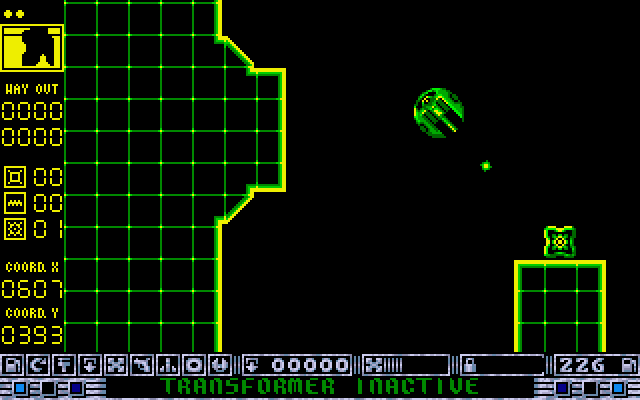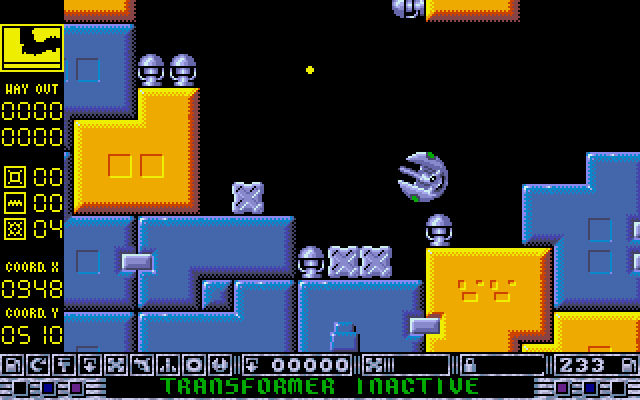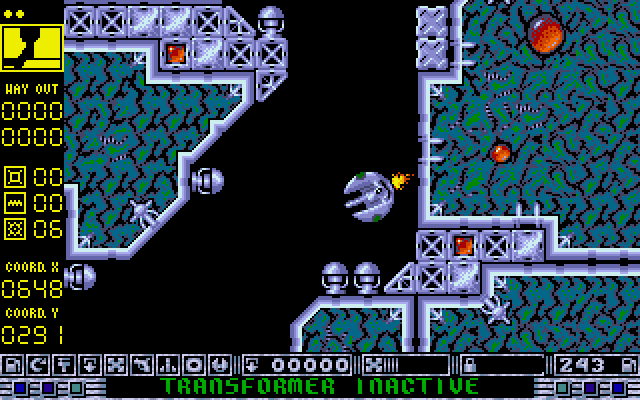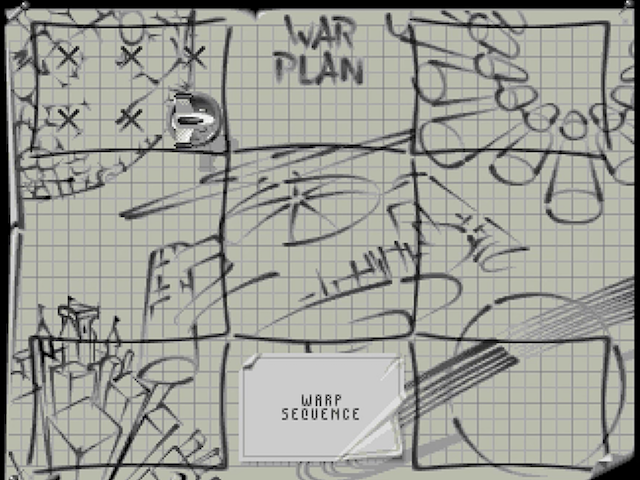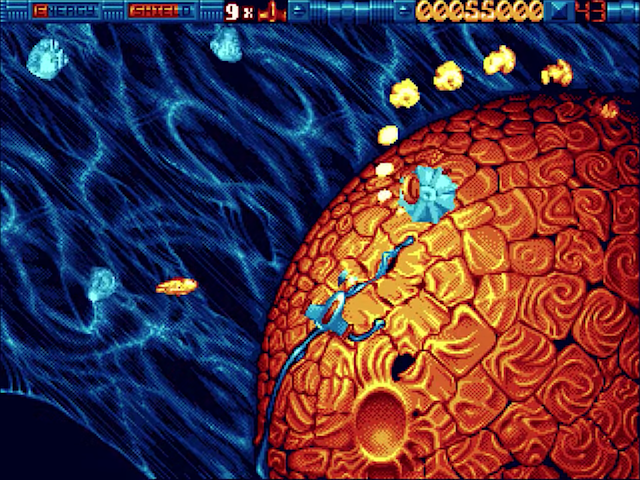Another one for my collection
In the not-too-distant future, everything will be impossibly expensive. Jobs will become very scarce with no decent opportunities for the majority of us (yikes, what a surreal prediction). Hmm, perhaps we should move on quickly? Anyhow, there is the prospect of joining the Roto-Raiders who pilot huge tanks through dangerous caverns for a lucrative reward. Only the brave need apply because the missions are deadly.
Dare you sign up? What, really? Yeah... Of course, we do so count me in!
Gravitar-Esque games are popular for the Atari ST. We have killer titles that are extraordinarily awesome - Oids and Thrust instantly come to mind. That means Arcana had to bring something new to the table in order to stand out from the crowd. Plus, I naturally had high expectations considering the strong competition!
Before we crack on, I bought Rotor off eBay, so let's look at all the goodies...
It's hardly in perfect condition, but it's pretty good, and I like the design too.


Mind-blowing content? It's minimalistic, but it's a piece of hiSTory.
Get to it, I wanna blow stuff up!
Rotor is like Thrust with numerous tasks split into separate missions. We begin with a training simulator to learn the controls, how to collect items, and kill the many different types of enemies. This is a great way to understand the basics and to learn (or rather grasp) the technical user interface. Oh, and the training needs to be fully completed before moving on to the real missions. That sounds like a con, but it is a good thing.
You can attempt each mission in many different environments - earlier levels are tame compared to the torturous ones later. Every cavern has antagonists (as the manual loves to say) who are enemies like Cannons, Laser Guns and Gravity Generators. Some can be destroyed, whereas others can be temporarily disabled.
Our spaceship is a large circular craft with adequate but sluggish manoeuvrability. Physics plays a part, so there is gravity to consider, and you can only accelerate in the current facing direction. The caverns are vast and claustrophobic due to the ship's size and lacklustre abilities (feels leaden compared to Thrust or Oids).
All missions follow the path of needing to complete requirements like shooting Container Pods for their contents. Destroying them and killing as many enemies as possible rewards extra points. All this is within the time constraints of limited fuel and armour. Once you're finished, exit coordinates detail where to go to escape.
Simple stuff, so let's take a peep at a couple of early screenshots...
The training missions are a fantastic way to learn the ropes.
In this simulator, we only need to shoot (and then collect) what's in that box. Easy!
Power-ups & other stuff
Rotor could have been a simple game of shooting/collecting stuff. But it's not. Arcana obviously thought this would be far too boring, so jazzed it up with pointless clutter. Let's begin with its user interface...
On the left-hand side, is a map detailing your position, the dots above that are your remaining lives. The coordinates of zeros will change once the mission is complete to show the exit location to rendezvous (the other coordinates are your current location). The three icons between these are 1) the time left until a bomb explodes. 2) The time left until a disabled laser resumes. 3) The required number of crystals to gain exit coordinates.
At the bottom of the screen is the radar and this shows helpful information like the state of your armour, cargo, and remaining fuel. However, it also displays potential enhancements that can be gained by collecting pearls. For example, the second icon is for the ship's rotational speed. The third icon improves upon its lethargic thrust.
Hang on, what was that about Container Pods and Pearls? Container pods offer a variety of goodies like fuel, upgrades, explosives (potential traps) and sun crystals (to exit the level). Pearls affect performance significantly: collect two, and the ship rotates faster. Pick up a third, and you can upgrade the thrusters.
I cannot help but wonder why they needed to be earned rather than come as standard? It feels unnecessary to upgrade the ship during a mission instead of concentrating on the task. Too convoluted.
Let's take another look at some more screenshots from my victorious venture...
Blast those gun turrets before attempting to sneak by.
Things are getting hectic in Lego land, which is very difficult to manoeuvre through.
Tips and level codes!
- Don't even think about skipping the training missions. Trust me!
- Bombs automatically activate after first shooting the pod. You have two options, leave the screen safely and survive or collect the extra cargo and take it home.
- Beware of how much cargo you're carrying. Extra weight means a slower ship using more fuel.
- Watch the walls, take your time and let the scrolling catch up with you.
- If something is able to shoot at you then it's best to shoot that first and clear the way.
- I hate to say this, but don't worry about ship upgrades as this wastes time (and fuel).
- I said don't skip the training but, if you really can't wait, here are the level codes:
- Level 1 = GAG,
- Level 2 = LIP,
- Level 3 = SLY,
- Level 4 = MEW,
- Level 5 = AWE,
- Level 6 = TNT.
As tough as it is groovy-looking. Must admit, I do love the weird palette!
Argh, this level looks so passive but is insane! I died straight after taking this screenshot.
Input & Output
Controls are as familiar: fire button to (erm) fire, upwards to thrust, and left/right rotates your craft. I doubt there would be any reason to change this asteroid-ripping formula because it's tried, tested and great. However, my problem is the craft's manoeuvrability, which is too sluggish by default, and that's a bit rubbish.
Graphically, Rotor is lovely, with a futuristic/Tron-like feel for the training simulator. Later levels look funky with colour and a design that feels 8-bit in some respects. The screen scrolls in all four directions smoothly, but it will struggle to keep up with your ship if you go too fast. Hmm, at least that forces you to be more careful!
The sounds are acceptable, albeit not the best you've heard. There are effects for the engine, shooting, enemies, etc. They hold back the deafening silence of space and make Rotor pretty much what you expect.
I think it's time for the final run of sexy screenshots...
Later levels are far too hard (for me) because there's too much going on for your sluggish ship.
Another later level, which has far too much going on for my reactions to cope with!
The CryptO'pinion?
I've enjoyed Rotor but not nearly as much as I should have. Don't get me wrong, Rotor has some good points like the training missions and groovy graphics. However, it complicates what should be a fun shooter for no decent reason. The worst is the necessity of ship upgrades during the game rather than after each stage.
There's a lot to moan about, I guess? I have enjoyed Rotor, it's good to play and something new. But let's not kid ourselves, it's bordering on mediocre compared to Thrust and Oids. Close but no cigar!






